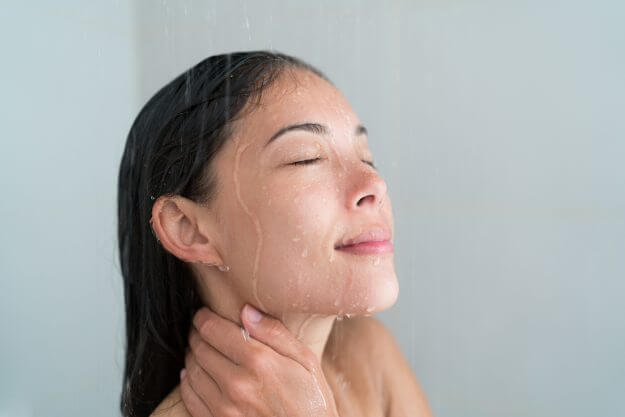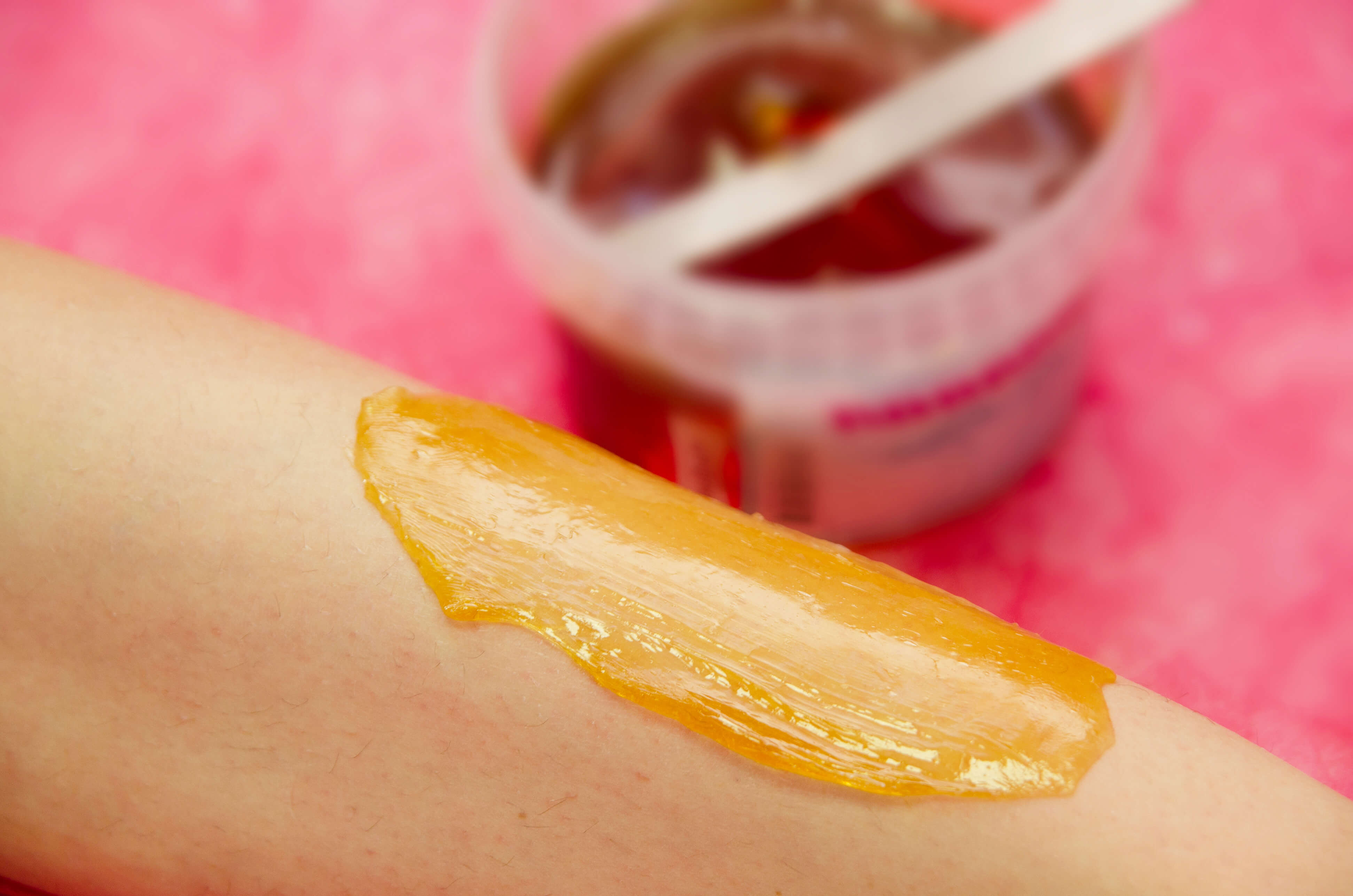Spring means renewal, regrowth, warmth and body hair. Wait, What? For those of us who live in colder climates, our bodies are covered from head to toe for half of the year. During those six months of hibernating under layers of clothes, we can be a little lax on our body hair grooming practices. When Spring comes, we shed those layers of clothing and unwanted hair.
Shaving several times a week can be time-consuming. Going to a salon for waxing is expensive and painful.
Sugaring is a “new” method for hair removal that has been around for centuries. A paste or gel made from three natural ingredients – sugar, water and lemon juice – is applied to the unwanted hair and removed using a washcloth.
The unwanted hair comes off easily and painlessly.
Sugaring 101

Using sugar to remove hair has been around since ancient times. Used in the Middle East, the practice of sugaring uses natural ingredients to remove hair instead of the chemicals of waxing or shave gel. It has only recently gained traction in the Western world as an effective, less painful alternative to waxing.
The process is sometimes referred to as “sugar waxing”, but that’s an incorrect term, as sugaring doesn’t contain resins. Salons call it “sugar waxing” so that clients will be intrigued to give it a try.
The gel or paste used in sugar waxing is made from sugar, water and lemon juice. Honey or essential oils are sometimes included in the recipe for additional bonuses. Honey is rich in antibacterial properties and antioxidants that help keep skin youthful and smooth. Fragrant essential oils have a wide variety of health and skin benefits.
Sugaring is done by smoothing the paste mixture onto the desired hair removal area in the opposite direction of the direction the hair grows.
After the mixture has been on the skin for a few minutes to harden, the paste is removed with a warm cloth. The hair is removed in the direction of the hair growth. This helps keep the hair intact and prevents breakage in the hair follicles.
The results of sugaring is the removal of the hair follicle from the root.
This can keep hair from regrowing for up to six weeks. Sugaring is much more gentle than waxing, which can cause 15 to 30 percent of hair to break as the wax is removed. Hair grows back slower and softer after using the more gentle hair removal process of sugaring.
Sugaring Pros:

Sugaring removes hair much faster than waxing. During waxing sessions, the hair is applied to one small area and then removed, applied to another small area and removed and so on. Sugaring paste can be applied to a larger area because the paste won’t dry out. Sugaring can be removed in small sections or in large sections, depending on your preference.
Unlike wax, which needs an oil-based cleanser to remove the wax, the sugaring paste is easily removed with warm water.
The hair you plan to remove needs to be at least 1/16 of an inch long when the sugaring method is used. That length is easily attained within a few days of shaving.
The results of sugaring can last up to six weeks. It is recommended that sugaring is done every 25 days and regularly performing sugaring can result in permanent hair removal.
Sugaring Vs. Waxing – Which is More Painful?

The process of waxing involves smoothing warm wax onto the skin and ripping the wax off with paper strips, the hair coming with the wax.
Unlike wax, sugaring contains only natural ingredients and doesn’t require paper strips or aggressively ripping the hair out of the follicles.
Compared to waxing, many people find sugaring the less painful technique between the two. This is because the sugaring paste doesn’t stick to the skin as much as wax does resulting in less irritation. When removing the hair, waxing works against the direction the hair growth while sugaring works in the direction of the hair growth. Not only does this reduce the pain and discomfort, it also helps prevent the hair follicles from breaking.
Ingrown hair is often caused by hair breakage. When one hair breaks, the next hair that grows gets trapped under the skin’s surface. Ingrowns hairs can be extremely difficult to remove, especially in the more sensitive areas such as the bikini line.
The resin contained in waxing can sometimes stick to the live cells of the skin and remove the healthy areas of the skin when the paper strips are yanked. This is not only painful, but it can result in skin irritation and even burns. Sugaring doesn’t contain any resin and doesn’t adhere to the live skin cells, only to the hair follicle itself.
In addition to hair removal, sugaring also gently exfoliates the skin by removing the dead skin cells when the paste is removed. When the hair is removed, it is removed all the way down to the root, which helps slow down the rate of hair regrowth. The exfoliating properties leave your skin smooth, soft and hair-free. Regularly using the sugaring technique can cause permanent hair loss, which is a good thing in this case.
DIY Sugaring Wax

You can save yourself time and money (and pain) by making a sugaring mixture at home and applying it yourself. The recipe only needs 3 ingredients that are most likely already in your cupboard.
Recipe:
- 2 cups sugar (white cane is preferred)
- ¼ cup lemon juice
- ⅛ cup water
You can add 1 teaspoon of xanthan gum to make the mixture thicker, but that is completely optional.
Directions:
Mix ingredients in a saucepan over medium heat. Quickly boil (not simmer) the mixture until it reaches 260 degrees Fahrenheit. Drain the leftover water and let the mixture cool in the fridge for a few hours.. When ready to use, heat up a small amount of the mixture in the microwave for a few minutes until the paste is warm. Apply to desired area and let it sit for a few minutes. Rinse with water using a warm washcloth or muslin.
After-Sugaring Care
Before you begin the sugaring process, cleanse and tone the skin to eliminate bacteria.
Follow these after-care tips once the sugaring process is complete:
Exfoliate Daily

While the sugaring process is a natural exfoliator, you still need to exfoliate regularly. But don’t start the daily exfoliating until the day after your sugaring to prevent skin irritation. If your skin is oily, you can use a sugar scrub to exfoliate.
Shower After Working Out

Your hygiene practices are important after sugaring because sweat and dirt can clog the hair follicles. If that happens, your chances of suffering from ingrown hairs increase. You should also shower after any type of physical activity, such as working out, to wash off the sweat and bacteria. If you don’t have time to shower, you can use body-cleaning wipes.
Use Cold Compress if Skin is Irritated
Sugaring is less painful than waxing, but it can still cause irritated skin. The skin might appear red or puffy because of increased circulation to the skin. A cold compress will work better than a heating pad because cold restricts the blood vessels, reducing the redness.
Repeat Treatment in 25-30 Days
Once the sugaring is complete, your skin should be hairless for up to six weeks. However, repeating the treatment every 25 days or so can result in permanent hair removal. This will mean less work for you in the future and smooth, soft legs (and other areas) for the whole summer.
Moisturize Skin After Sugaring

Sugaring will help exfoliate the dead skin cells from your body. After any exfoliating, you need to moisturize your skin to restore the moisture removed from the exfoliating process. The new skin cells will help nourish the skin, but moisturizers help lock in the nourishment.
References
https://www.liveabout.com/sugaring-hair-removal-101-1717097
https://greatist.com/live/hair-removal-what-is-sugaring-and-how-does-it-work

